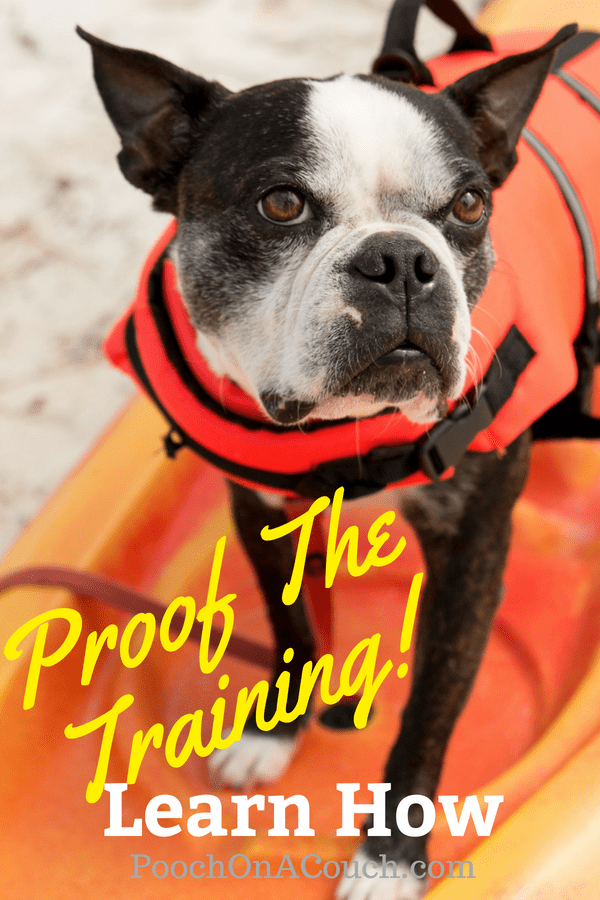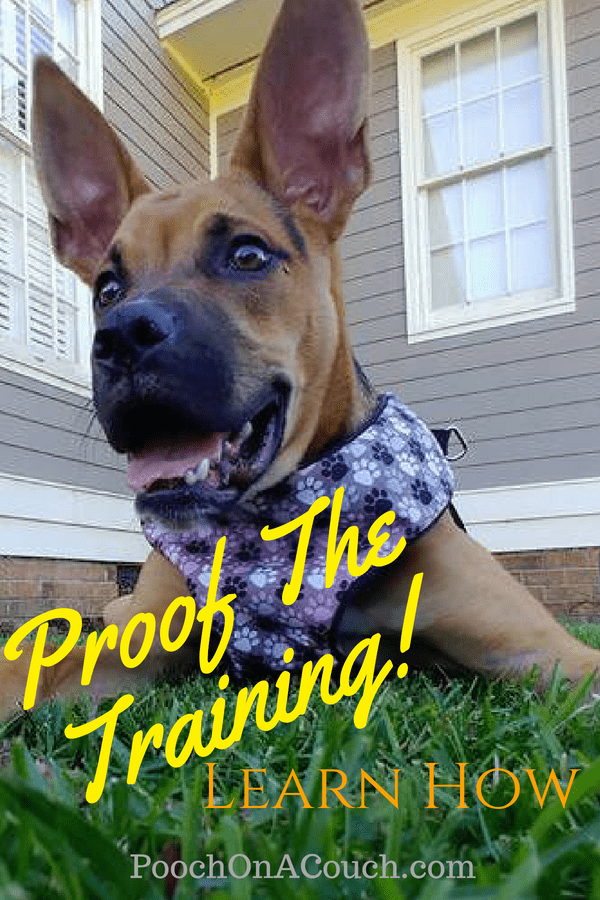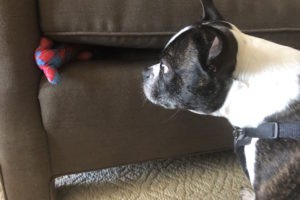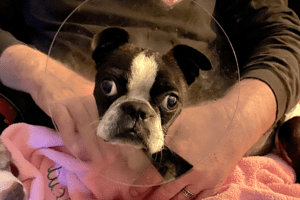I learned a new skill: I know how to knit. After just a few minutes of practice, I can knit anywhere! The coffee shop, the park, inside, outside, with friends, or alone. I’m able to generalize new skills to apply them in a variety of situations. Anyone need a scarf? hehe.
It’s your turn. Think about a skill you’ve learned. Can you perform the skill anywhere? (given you have any tools required to perform the skill) You probably can.
Your Dog May Not Be Able To Generalize New Skills
Dogs don’t usually possess the ability to generalize new skills. More often, they need practice in a variety of situations and environments so that ultimately they will respond favorably to you every single time you give them a cue.
Below are three stories where helping dogs generalize new skills (also known as proofing the training) is/was required.
Viktor – My Nephew’s Shepherd + Boxer Puppy
My nephew, just starting out as a young adult, chose a Shepherd/Boxer puppy as his first pet. This beautiful dog is a handful! Viktor possesses all of the energy and playfulness of a Boxer and all of the loyalty and brilliance of a Shepherd. (Not that Boxers aren’t smart!) This dog is a diamond in the rough and has a ton of untapped potential.
My nephew is active in training Viktor and is committed to pulling Viktor off of treat rewards quickly, using toys/play as the standard reward. It’s a great idea! Dogs don’t always have to be rewarded with food. Viktor likes his toys and he loves a great game of tug. New skills are first introduced using food (a stronger reward for Viktor), later rewarded with play. I applaud his decision.
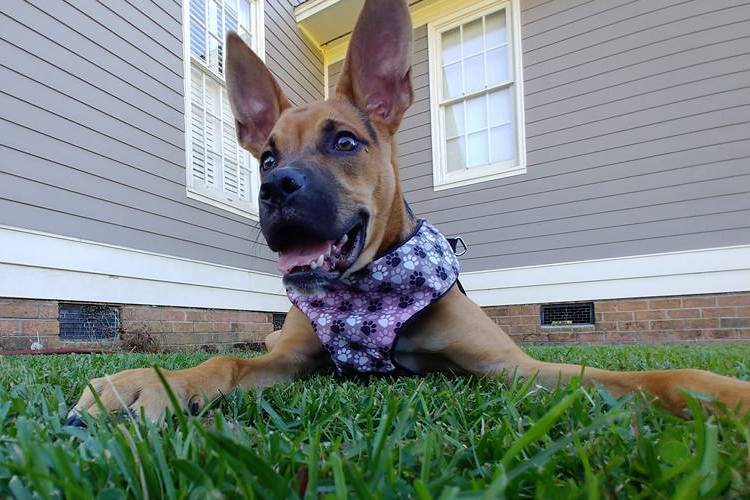
“Positive Reinforcement” by definition,
is always decided by the receiver, not the giver.
Patricia McConnell
On a recent visit to the family, I noticed Viktor didn’t come into the family room with the family – my nephew and the dog would sit in the hallway outside the family room instead. My nephew said Viktor became rambunctious when in the family room. He could sit quietly with his toy in the hallway just fine.
Hmm. Viktor had a failure to generalize new skills problem. In other words, my nephew hadn’t yet proofed the training by continuing to train with distractions.
I suggested that if Viktor knew skills outside the family room, he could execute those skills inside the family room. He only needed the practice. With nothing but Viktor’s favorite toy, my nephew brought his dog into the family room. Immediately, Viktor became too aroused, jumping up, ignored cues, and was clearly disinterested in the reward, his toy. My nephew nearly gave up. My elderly father, also in the room, was on the edge of becoming anxious and cranky.
Finding The Right Reward
I grabbed a food reward from the kitchen and returned. Really, I grabbed a fistful of kibble, handing it to my nephew. “Go back to basics,” I said. Immediately, he had Viktor’s attention with food rewards, and my nephew ran Viktor through the paces of a “relax” or “settle” cue. Within two minutes, not only was Viktor responding and executing his skills in a new environment, my nephew had already transitioned Viktor away from the food reward and onto the toy reward.
This is the process of generalization – practicing skills in new situations. If my nephew learned anything that evening, he will take Viktor everywhere – every single room in the house, with guests, the park, a friend’s house, the veterinarian lobby and asking Viktor to perform the “settle” cue in a variety of locations, over and over and over.
Otis And My Failure To Generalize The Skill of Crate Training
Penning this blog, I recognize so many ways I’ve yet to help Otis generalize his skills to the “new.” We’ve worked to help him become less aroused around new dogs, both foster dogs and stranger dogs in his world. I’ve realized another skill where Otis and I should do some focused work: Generalizing crate training.
Otis is perfectly crate-trained at home. He spends time in his crate every day, even if I don’t leave the house. We always make crating fun. He even rides in the car in a crate with no issues. However, the crate isn’t fun and he loses his perfectly crate-trained certification (ha!) when he is crated somewhere else.
- I cannot take Otis to a hotel room and crate him while I leave. He becomes too anxious. And loud.
- He does not board well at the vet or other pet boarding facilities.
- Visits with family are a problem; Otis becomes anxious and loud. Coupled with the fact that there are two dogs in my family’s home – and it’s a double whammy.
So…… travel is hard. And I want to travel. Sounds like I’ve just encouraged myself to start helping Otis generalize crating. (cheesy grin)
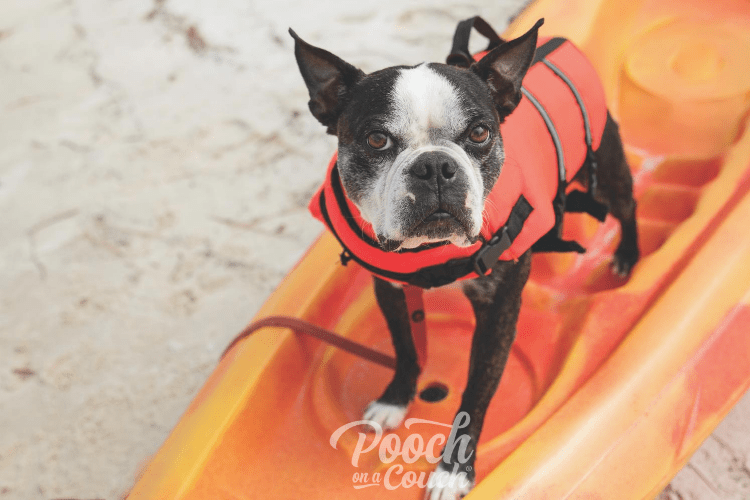
Nick – When People Are Too Rewarding
I acquired Nick as a foster dog when he was 11 weeks old. He and his 4 littermates arrived at my home with a plan (a hope, really) to begin the process of separating these puppies, an event long overdue. At the time, the rescue was not utilizing any type of puppy rearing protocol, and in hindsight, it showed.
Read About The Litter From Hell!
Up until their arrival at my home, the only time these puppies ever saw a human was when it was time to clean up their space, provide fresh water and food, and play with them a little bit. Most of their time was spent in quiet with each other and their mama dog. So – the sight of a human meant really good things, every time! In addition, as I’d learn at 2 a.m. that first night, noise meant that a human was coming – and the excitement was deafening. It didn’t help that I have an open floor plan. I’m visible, a lot.
Nick seemed particularly desperate for a human to interact with him. Nick decided that in order to be seen by the human, he needed to be first to the x-pen’s edge. And to be first, he had to fling his entire body into the wire wall.
Screech! Blam! Screech! Blam! He was almost in a panic. For this and a few other behaviors, I decided that Nick would be the puppy that stayed with me for a bit. He needed some work.

You Can’t Train In Chaos
Slowly, the chaos abated as one-by-one, puppies left for new foster homes until only Nick remained. Thankfully, he learned new skills quickly. The more he learned, the more he relaxed. Our main focus of training (besides house training and crate training) was to alter his reaction to seeing people. We began the practice of “yes, people really do bring all things good, but—screeching and body-slamming is not the way to get it. You must sit and sit quietly.”
We started with the x-pen. Then the crate. After that, we worked with the baby gate, creating change within the confines of the house. We took the training outside, putting the x-pen on the deck. Next, we generalized to other people. I asked friends to come over. Neighbors came to the front yard. We walked the neighborhood when others were walking. Then we went inside the hardware store, where people can come at you from nowhere. Nick learned how to recover from being startled into excitement. I love my neighborhood Ace Hardware! They help me with all of my foster dogs.
Each new step was built upon the previous one. With each new environment, the distractions became a little more complex. If we went to a new environment and Nick struggled too much to exhibit the desired behavior, we’d go back a step.
Our work didn’t take long at all – Nick was with me only a few weeks before he was ready for adoption. How much time per day did I spend working with Nick? No more than 15-30 minutes total, much of it blended into my daily routine.
Teach Functional Skills, Not Just Behaviors
Whether you are teaching basic manners behaviors or you are working on a specific issue such as fear or building confidence, help your foster dog “proof with distractions” or generalize their skills to a variety of situations. We often teach “sit” then “down” and we then practice those behaviors in that order. Mix it up! If you are teaching your foster dog to accept “husbandry” skills (meaning the dog accepts being handled for grooming, vet procedures, etc) it’s one thing for the dog to accept that handling in the quiet of your home, but what about in the lobby of the veterinarian’s clinic?
If you’ve ever fostered a puppy mill dog that lived on wire their entire life, you probably celebrated their first experience touching the grass. What about other surfaces? Do they need that experience, too? Of course they do! Surfaces are wet, dry, bumpy, smooth, furry, warm, cool, slick, or we have surfaces, such as sand, that moves.
I remember a dog named Jake, who’d clearly spent his entire 10 years of life walking on two surfaces: grass and carpet. His foster home had laminate floors which Jake refused to walk on. She purchased quite a few carpet runners to create a path for him to navigate her home.
Find The Training Moments In Your Everyday Schedule
In my blog post Guide To Fostering Dogs: 10 Skills You Need To Know I talk about teaching, touching, going. And if you were to separate each of these into separate training events, yes, you could be training all day. That’s certainly not my message. Be an opportunist. If you are taking your foster dog to the vet for a checkup – use that opportunity to practice a skill that you are proofing. While taking a walk in the park to provide exercise, look for variations in terrain. Playgrounds often have different types of ground covering.
I fostered a dog that to this day hates for his toes to get wet, making it difficult for him to take a walk when the sidewalks are soggy from melting snow or rain. He’s comical about it, but still.
Prepare Your Foster Dog For Their BEST Life
The more exposure we give our foster dogs – exposure to training, exposure to community, exposure to life – the more able we are to communicate a foster dog’s placement needs with our agency and with prospective adopters. And after all, that really is what fostering is all about. It’s MORE than just saving a life. It’s being a part of ensuring this rescued dog has the BEST life going forward.
Do you have a story of a foster dog you’ve worked to generalize behaviors? We love hearing your stories! Share with us!
Pin Me!
